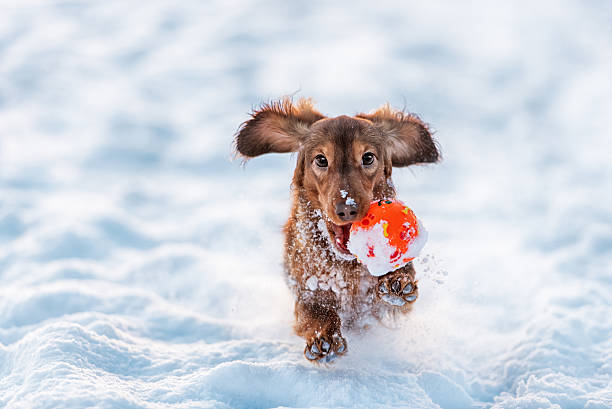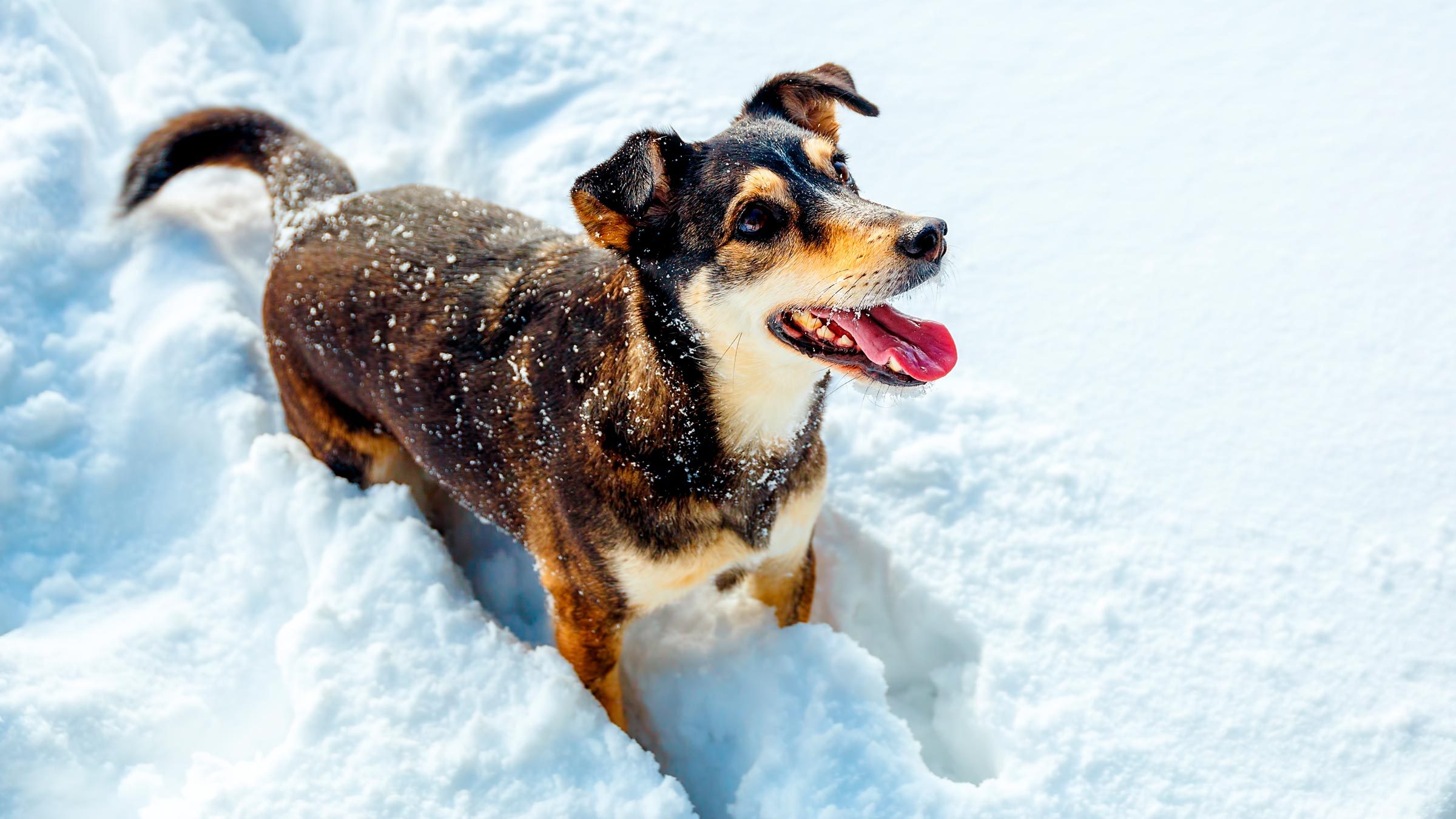
Longhaired Dachshund dog red color runs with the ball in his mouth with the snow
Most dogs love to roam around and search for things under the snow. This article offers valuable tips to help you safely navigate with your dog through winter fun.
1) Watch Out for Salt Poisoning
When you come home from a walk in the snow, your dog will lick everything. You may wonder what the problem is. As you know, salt is sprinkled on the ground during the winter to prevent slipping. This salt water sticks to the dog’s feet and can be deadly if ingested in large quantities.
The amount of salt that is fatal to dogs is estimated to be between 1.9 and 3.7 grams per kilogram. The most common complaints are vomiting and diarrhea, but neurological damage can also occur.
2) Dogs Can Suffer From Brine
To prevent this, rub their paws with a special ointment before going out with the dog. After a walk, it is advisable to clean the paws with lukewarm water. A variety of products are available, such as “Paw Balm” foot balm and “Vetramil” paw wax.
Some people also use vaseline. Vaseline can also be applied but make sure the paws are cleaned well after the walk since dogs have a habit of licking their paws, and vaseline can make them sick.
3) Do Not Leave Your Dog on Ice
Ice is very slippery by nature, and your dog may slip. This can damage joints, bones, and muscles. In addition, there is the risk of your dog falling through the ice or into a hole, which can result in all kinds of situations.
4) Keep Your Pet Warm
How can you keep your dog warm when it is cold outside? It is not healthy for a dog to sit still in the snow, so it is always a good idea to keep your dog moving so that he can stay warm. For dogs with short hair or bald stomach, you may want to purchase a dog coat or blanket. Some breeds do not tolerate the cold, while others do. Therefore, keep an eye on your dog to determine if it is too hard for them.
Keep these points in mind:
- Small dogs are sensitive to the cold.
- Puppies are still small and do not have enough fat or coat to protect them from the cold.
- Shorthaired and bald breeds originating from warmer regions are less tolerant of cold. For example, the Spanish galgo.
- Older animals may not be able to regulate their body temperature well.

5) Cut Long Hairs
Some breeds have long hair between the pads of their feet and under their bellies. Snow clumps can stick to the long hair, which can be very annoying. In particular, walking is difficult when the paws are clogged with snow and ice chunks. It is, therefore, a good idea to cut excess hair to avoid this inconvenience.
If clumps of snow are still stuck to the fur, squeeze them out. Never try to pull it off!
6) Avoid Keeping The Dog Wet
Wet dogs are prone to hypothermia. Therefore, do not allow snow or water to remain in the coat.
7) Lighting
In winter, it is often already dark at 5 pm and good lighting is a necessary luxury. There are many possibilities. Consider reflective safety vests, reflective collars, flashing lights, etc. so that your dog can see clearly. Of course, the same goes for you!
How Do I Know if My Dog Has a Cold?
- Introverted personality, no contact.
- Difficulty breathing
- Weak heart rate
- Dogs have an average normal temperature of 38°C/39°C. If it drops below 37.5°C, call the vet.
Frostbite
- Skin is pale, then red and swollen.
- Pain in ears, tail, or paws.
Let us know if these few tips have helped you in the comments below!







1 thought on “7 Essential Tips To Enjoy A Snow Day With Your Dog”